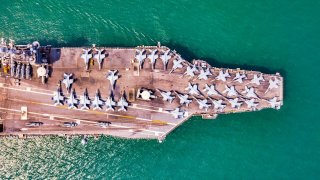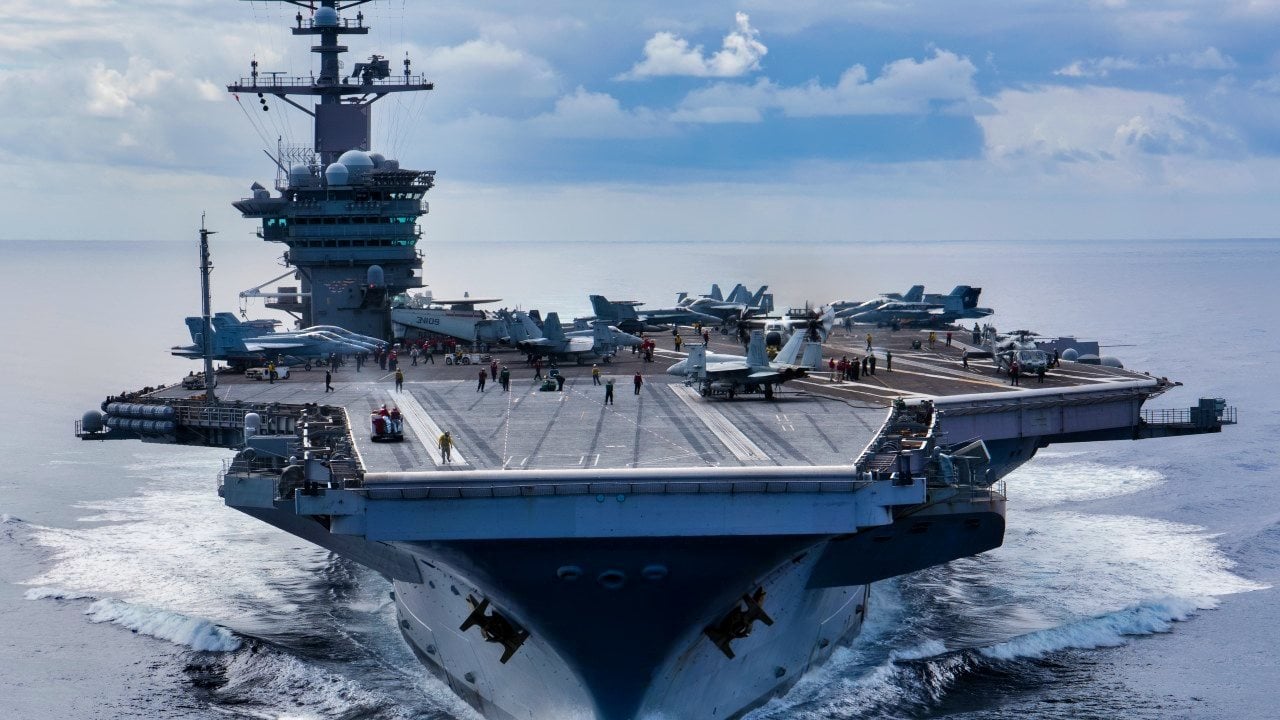Maya Carlin

Why does China seem obsessed with sinking U.S. Navy aircraft carriers? As tensions between China and America continue to ramp up, all eyes are on the South China Sea.
More specifically, the naval might of both countries will be the most significant factor if a full-blown kinetic conflict arises.
While China may not possess the large quantity of aircraft carriers deployed by the U.S., it remains focused on developing the ability to sink large warships via missiles.
Beijing’s three existing carriers do not hold a flame to Washington’s eleven, making the need for carrier-killing missiles much more important.
Mapping out China’s obsession with America’s carrier capabilities:
America’s naval prowess was perhaps best recognized by China during the Third Taiwan Crisis.
In 1995, Taiwan’s first-ever democratic elections for president were just one year away, a notion that Beijing vehemently opposed. When the sitting president of Taiwan Lee Teng-hui was invited to speak at a U.S. college concerning the Taiwanese identity, the People’s Republic of China decided to respond with threatening behavior.
The PLA conducted military exercises, including the live fire of missiles, in an attempt to intimidate Taiwan as it prepared for that year’s election.To deter Beijing’s hostile behavior, the White House deployed two aircraft carriers (the USS Independence and USS Nimitz) to Taiwan-adjacent waters and the Philippine Sea.
The U.S. Navy’s carrier superiority was noted and Beijing backed down from additional aggression.
Today, China operates the Liaoning (Type 001) ex-Soviet carrier, the Shandong (Type 002) domestically produced carrier, and the Fujian (Type 003) carrier.
Regardless of the capabilities of these ships, they are outnumbered by the U.S. Navy’s own fleet of carriers. In war, China’s path to naval victory would depend on the sinking of U.S. carriers, hence Beijing’s emphasis on these weapons.
Introducing the DF-26B and DF-21D:
Back in 2015, China first debuted its DF-26B intermediate-range ballistic (IRBM) missile during a military parade. This two-state, solid-fueled weapon can allegedly travel at a range of nearly 2,500 miles and can conduct both conventional and nuclear strikes against enemy targets.
As an “active terminal seeker,” the DF-26B can engage moving targets. China also possesses the DF-21D, which has been called the world’s first-ever anti-ship ballistic missile. According to experts, this missile has a range of around 1,000 miles and has been equipped with several upgrades over its nearly three decades in service.

If China deploys this missile in a potential war, the U.S. Navy will have to rely on the AEGIS sea-based ballistic-missile defense system.
As outlined by analyst Brent Eastwood, “Standard Missile-6 and Standard Missile-3 interceptors will have to protect the carrier. SM-6 interceptors are on board at least 60 American ships. The SM-6 Block 1A has been tested since 2017 against terminal phases of incoming enemy missiles, and now the SM-6 Block 1B could be an improved version that would better defend against China’s ship-killing missiles.”
No comments:
Post a Comment